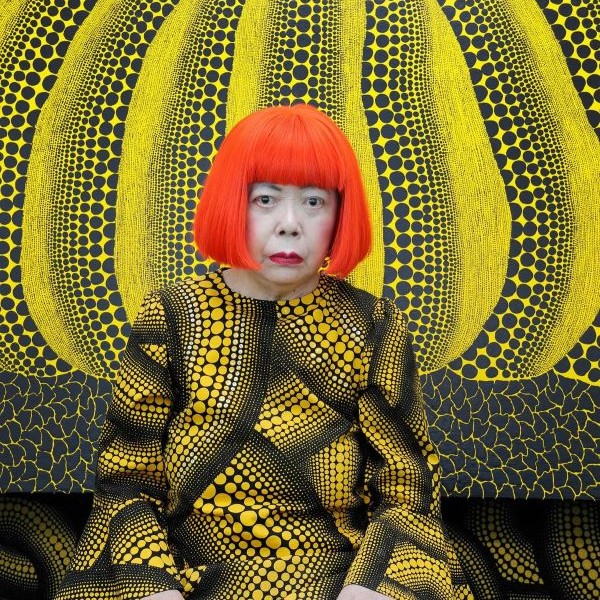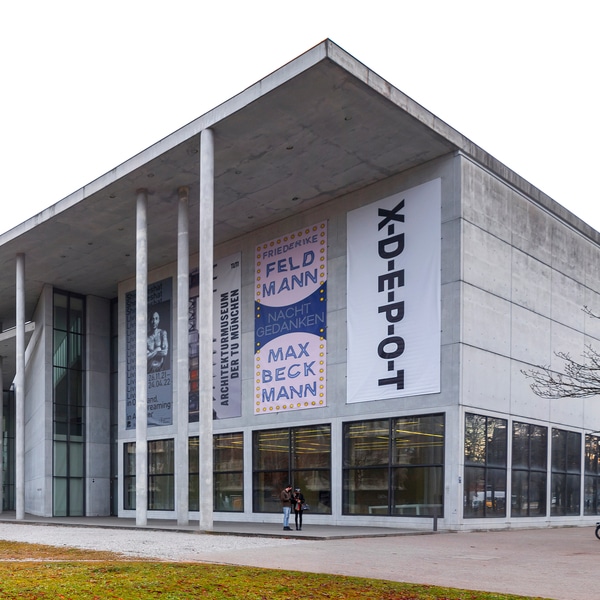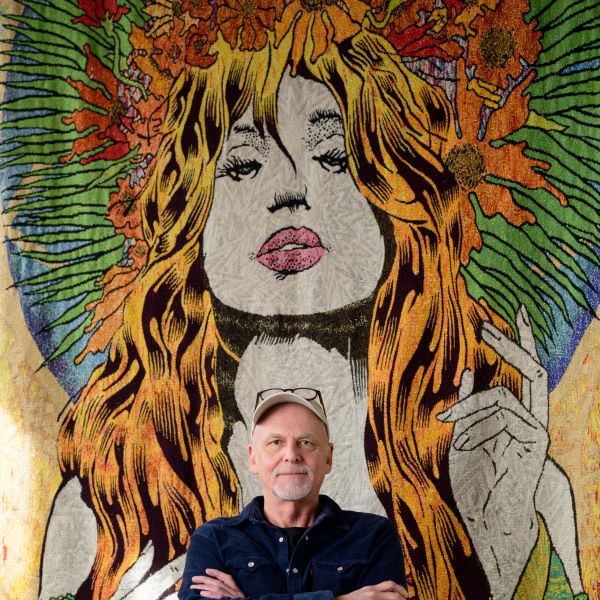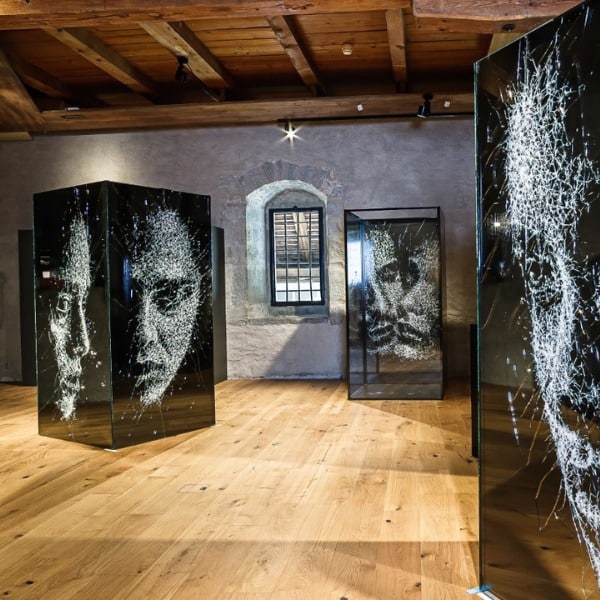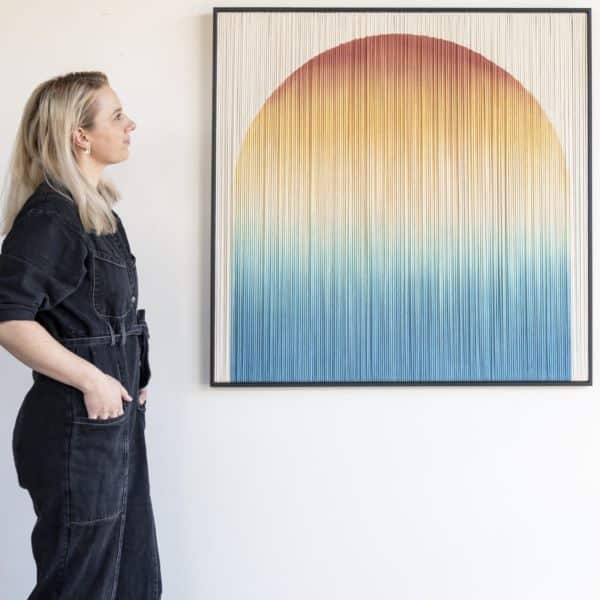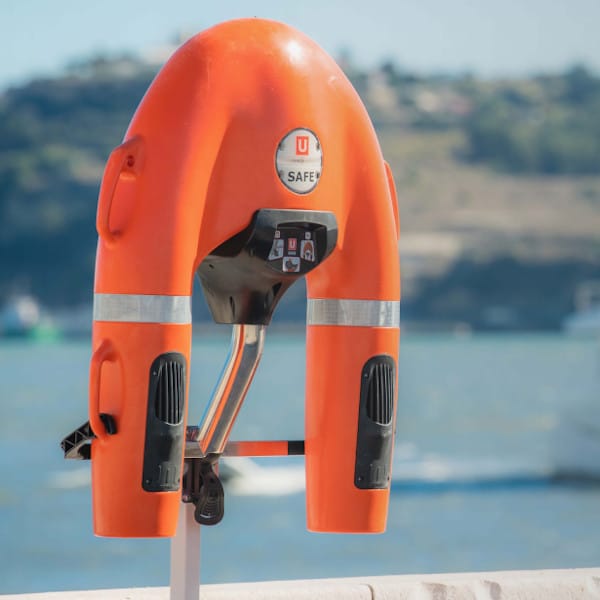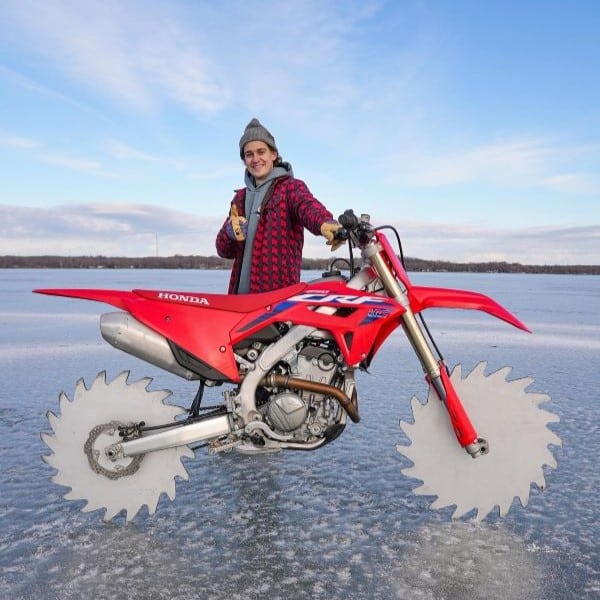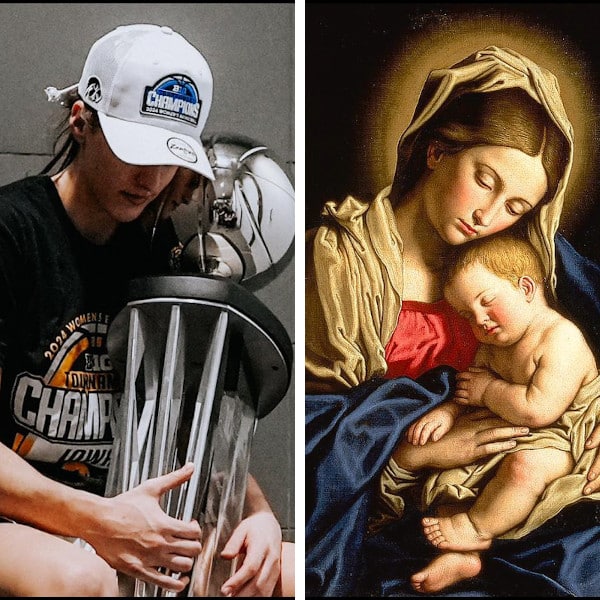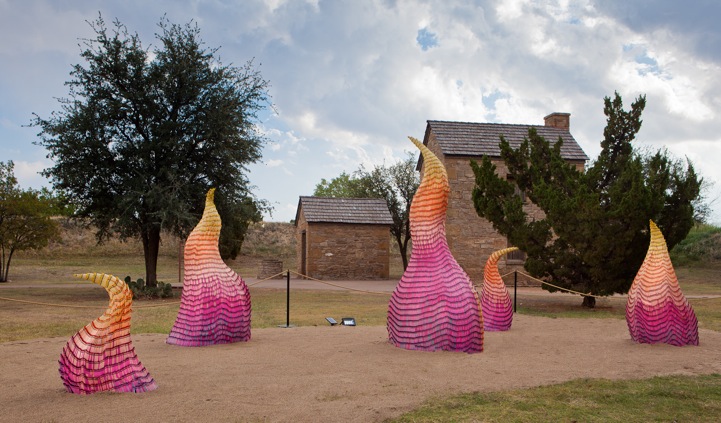
It may seem unusual for a grown-up to have an account with Crayola, but it all makes sense when you see what Nashville-based sculptor Herb Williams creates with crayons. His latest project is an outdoor art installation at the National Ranching Heritage Center at Texas Tech University in Lubbock, Texas. The installation, entitled Unwanted Visitor: Portrait of Wildfire, includes five life-sized sculptures of flames comprised of hundreds of thousands of crayons.
The monumental structures, some of which reach up to eight feet high, represent the wildfires that raged through Texas last month, devastating the landscape. The colorful installation changes the view of its dry surroundings, much like a real wildfire. The crayon flames will also continue to change, melting under the hot Texan sun, and leaving its mark on the otherwise brown landscape.
The purpose of this piece is to raise awareness of the wildfires in this scorched land that has had its fair share of droughts. Educational programming will be available over the duration of the exhibit which is set to run through the end of the year.
We recently caught up with Herb and he was kind enough to answer some of our questions. Be sure to check out the interview, below.

Where are you from?
I am from L.A. (lower Alabama), went to college and got a BFA in sculpture, and then worked at a bronze foundry in West Palm Beach, Florida, where I was able to help cast the last sculpture of photorealist Duane Hanson, “Man On Riding Lawnmower.” I then got to see it exhibited as part of his retrospective that went to the Whitney. I was awed and thoroughly bitten with the bug to participate in the larger art world.
Can you please give us a brief description of yourself?
I feel most at peace when I am walking through my family's pecan orchard. I cannot live without books, which I enjoy organizing prismatically, rather than alphabetically (it's how my memory works). I have two beautiful children Maggie,5, and Clay, age 8, who help me find humor in the oddest places. I love to dance and, like art, think that may keep me young into my 90's.

How did you get involved in this project?
I met Emily Arellano, who oversees the outdoor art exhibits at the National Ranching Heritage Center in Lubbock, Texas, and we began talking about a series of sculptures that I could create for them which would interact with the landscape, and yet be relevant and engaging with their patrons. Emily sent me a few news links to all of the wildfires that have devastated the entire state of Texas, and I began designing several wildfire maquettes for their approval. She also wanted to let you know that this project received a grant from the Texas Commission on the Arts. We were very excited about this because their budget has been cut so drastically this year, I knew that we had picked a relevant topic because they are being so selective with their funds. They awarded us a grant because our project used art to understand and/or improve the ecological and agricultural environment and focused on an ecological issue.

How long did it take to do the project?
It has taken almost a year to realize this exhibit?.
How many crayons did you use in total?
I pulled from about 87,000 crayons.?
Why did you use crayons?
I have experimented with as many different mediums that I could think of before I felt like I found a medium of my own, or my own style. In reusing such a traditional medium in a new way, I feel as though I am bringing something to the table that only I can offer, my own vision. The sculptures are meant to interact with the Texas environment, and I am eagerly awaiting the melt down of these sculptures. I think that could be even more beautiful than what I have created.
You're one of the only people in the world with an account with Crayola. How did that happen?
I have been working with crayons for almost ten years professionally. I first began by ordering custom boxes of the 64 count in a single color, which can get pretty expensive pretty quickly when there are about 9 crayons per square inch. After several orders I finally got a call from management asking just who I was, and did I realize that I ordered as many crayons as some schools? I now get the crayons in 50 lb single color cases of 3000. I have the cases stacked floor to ceiling in rows in my studio. The smell is intoxicating, they are a gateway drug.

What was the artistic process?
I designed five flame shapes ranging from 3′ to 8′ in height, and sent the designs to an incredible fabricator in Lubbock named Larry Simmons. He built the substructures of the flames out of steel bar and wrapped them in canvas, and then brushed on epoxy resin to keep the shell very strong and rigid, yet light. The substructures where then painted black, so that when the crayons do begin melting off of the structures, they will resemble the ashen landscape that the wildfires leave behind. I then began to attach the crayons, one-by-one, to the forms, bonding the paper to the sculptures, to create an interesting and unique pattern that would resemble a very static and changing flame.?
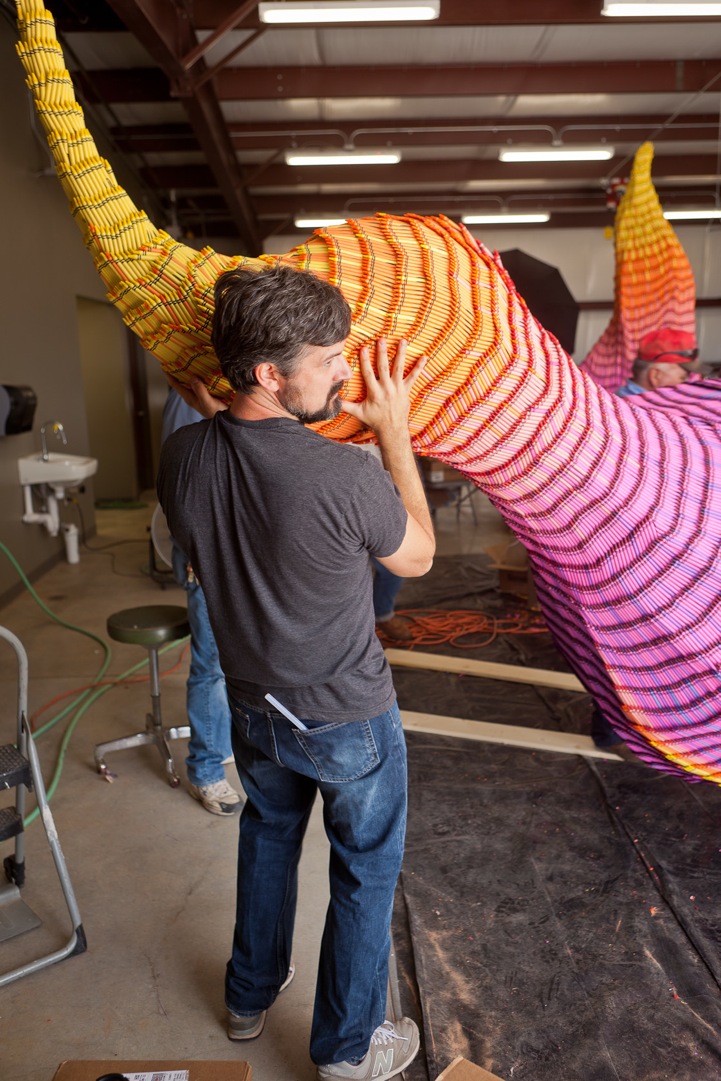
Where are the sculptures featured?
They are located outside next to a historic stone dwelling which was originally burned down by a wildfire, and rebuilt in stone to withstand fire. ?
Will they be moved to a gallery at any point?
No, it was my design to have these interact with the weather and change, degrade, and melt. Just as the landscape in Texas has been decimated by the wildfires this season. I hope that it will raise more of an awareness and help provide means to prevent this terrifying epidemic from happening in the future. I hope to create this kind of temporary/contemporary exhibit for other museums or state parks, it is very exciting to see the transformation.

How long, on average, did one of your wildfire crayon sculptures take to create?
Each wildfire would have taken several weeks to finish if I were doing it alone. But luckily I was able to assemble a crack team of highly talented assistants who were able to help me create and fully cover these wildfires in about 180 hours.
What is the significance of the materials you used?
I love the idea of these brightly colored crayons being scorched, faded, and melted by the sun into a broken and pooled disarrangement of my work.


How do you stay creative?
I go hiking, dancing, driving through the Blue Ridge mountains, and try a little transcendental meditation. If none of those do the trick I try a little lucid dreaming.
What advice would you give to aspiring artists?
Dream big, crazy, risky thoughts. And surround yourself with people who are smarter, more talented, and kinder than you are.
Photo credit: Ashton Thornhill
Herb Williams' website
via [Colossal]











































































